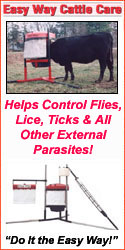 |
 |

|
|
|
Ohio Ag News Headlines |
 |
Jack Frost Will Bite Soon: Precautions for Feeding Frosted Forages
By: Mark Sulc, Ohio State University - 10/22/2021
One of these days soon we will have a frost. There is potential for some forage toxicities and other problems that can develop after a frost. Prussic acid poisoning and high nitrates are the main concern with a few specific annual forages and several weed species, but there is also an increased risk of bloat when grazing legumes after a frost.
Nitrate accumulation in frosted forages. Freezing damage slows down metabolism in all plants, and this might result in nitrate accumulation in plants that are still growing, especially grasses like oats and other small grains, millet, and sudangrass. This build-up usually is not hazardous to grazing animals, but greenchop or hay cut right after a freeze can be more dangerous. When in doubt, send in a sample to a forage testing lab and request a nitrate before grazing or feeding the forage after a frost.
Prussic Acid Toxicity
Several forage and weed species contain compounds called cyanogenic glucosides that are converted quickly to prussic acid (i.e. hydrogen cyanide) in freeze-damaged plant tissues, or under drought conditions. Some labs provide prussic acid testing of forages. Sampling and shipping guidelines should be carefully followed because prussic acid is a gas and can dissipate during shipping leading to a false sense of security when no prussic acid is found in the sample.
Plant age affects toxicity. Young, rapidly growing plants of species that contain cyanogenic glucosides will have the highest levels of prussic acid. Pure stands of indiangrass can have lethal levels of cyanide if they are grazed when the plants are less than 8 inches tall.
Species with prussic acid poisoning potential. Forage species that can contain prussic acid are listed below in decreasing order of risk of toxicity:
- Grain sorghum = high to very high toxic potential
- Indiangrass = high toxic potential
- Sorghum-sudangrass hybrids and forage sorghums = intermediate to high potential
- Sudangrass hybrids = intermediate potential
- Sudangrass varieties = low to intermediate in cyanide poisoning potential
- Piper sudangrass = low prussic acid poisoning potential
- Pearl millet and foxtail millet = rarely cause toxicity
|
 |


|
 |
|
Copyright © 2024 - Farms.com. All Rights Reserved. |
 |
|